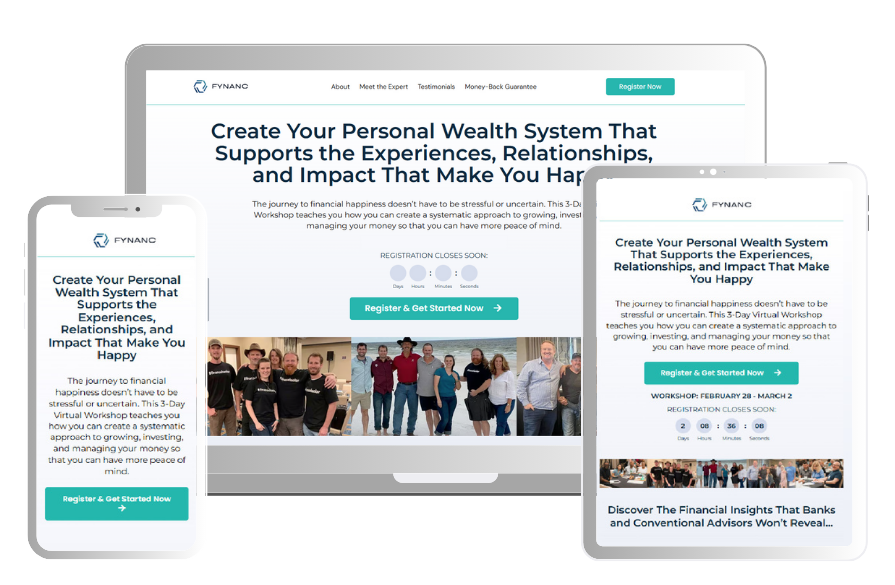In 2013, the Public Broadcasting Service (PBS), in partnership with the Frontline Journalism Fund, released a documentary, The Retirement Gamble, examining how America’s most popular retirement savings product, the 401(k), leaves more than half of working Americans without an effective retirement plan.
The shocking revelations exposed in this examination of the retirement fund industry clearly illustrate why it is essential to change your investment mindset if you want to maintain your standard of living during your retirement.
What’s the deal with a 401(k)?
What would you do if somebody offered you the following investment opportunity?

There is an opportunity to invest in a product, but the people managing this deal will not tell you what that product is. They have the right to change the product at any point, but they don’t have to tell you why they make these decisions.
You must invest 100% of the capital to get into this investment vehicle. If the product underperforms or the markets crash, you will take 100% of the losses.
The people managing this deal will charge you fees of anywhere between 1% – 5% each year to manage this investment. In 40 – 50 years, you will only receive about 30% of the returns you have made using your money due to taxes, fees, and other costs.
Does this sound like a good deal?
Unfortunately, if you, like approximately 60 million working Americans, are saving for retirement through your company’s 401(k) product offering, this is exactly the deal you signed up for.
The flaw in 401(k)s exposed
In recent years, there has been a growing concern about the effectiveness of 401(k) plans, one of the most popular retirement savings vehicles in the United States.
In the Frontline documentary, The Retirement Gamble, economist Robert Hiltonsmith sheds light on the often-overlooked fees and expenses associated with these plans and their impact on employees’ retirement savings.
Hiltonsmith’s research paper, The Retirement Savings Drain: Hidden & Excessive Costs of 401(k)s, reveals that the fees associated with 401(k) plans can be significant and often go unnoticed by plan participants.
These fees include administrative fees, investment fees, and expense ratios. According to Hiltonsmith’s research, the average total fees for a 401(k) plan are around 1 %- 5% of the total assets under management. This may seem like a small percentage, but it can add up to a substantial amount of money over time.
One of the most concerning aspects of Hiltonsmith’s research is the impact these fees can have on people’s retirement savings. For example, an employee who contributes $5,000 per year to a 401(k) plan with a 1% fee will pay around $50 in fees each year. Over the course of 30 years, this adds up to a total of $1,500 in fees. If that money had been invested instead, it could have grown to around $12,000 assuming a 6% annual return.
Compound growth vs compound costs
“What happens in the fund business is that the magic of compound returns is overwhelmed by the tyranny of compounding costs. It’s a mathematical fact.”
– John C. Bogle
Compound growth can be a powerful tool for investors, as it allows you to earn interest not just on your initial investment, but also on the accumulated interest over time. However, the power of compounding can also work against you if you are on the paying side of the financial system.
Martin Smith illustrates the effect of compound costs in The Retirement Gamble using the following simple example:
Using an online compound interest calculator, start an investment account with a capital value of $100,000. Apply a 2% administrative fee over 50 years.
In the first year, you will pay fees of $1,981 which is a mere $165 per month. However, if you continue to apply these fees over 50 years, the fund managers will make $63,242 in profits from fees, leaving you with $36,757.

In effect, if your 401(k) administrator is applying a 2% fee for managing your fund, you stand to lose up to 60% of your potential earnings over the investment lifecycle.
Another issue Hiltonsmith’s research highlights is the lack of transparency regarding 401(k) fees. Many plan participants are unaware of the fees they are paying or do not understand how these fees are calculated. This lack of transparency makes it difficult for people to make informed decisions about their retirement savings.
The problem with your 401(k)
The heart of the problem with the 401(k) as an investment strategy is that it was never designed to serve as a primary retirement savings vehicle. As Smith explains in The Retirement Gamble, in the 1960s and 70s, workers contributed to company pension funds until, at age 65, they entered retirement. They were guaranteed up to 60% of their monthly pre-retirement earnings for the rest of their lives.

The 401(k) was developed for high-income earners as a means to supplement a pre-existing pension. Unfortunately, by the mid-1980s, advances in medical science meant that people were living longer, and pension funds were becoming increasingly expensive to maintain. The response from large companies was to abandon the pension model and instead offer people the opportunity to participate in 401(k) plans managed by large financial services providers.
The mutual fund industry quickly grew, but the regulatory framework needed to govern the industry remained largely undeveloped. According to Hiltonsmith, financial services providers have used the 401(k) model to extract enormous profits from people’s retirement savings but rarely act in the investor’s best interests regarding investment decisions.
“Over the past few decades, we’ve handed over more than $10 trillion of our retirement money to the financial services industry. They’ve built a pretty good business out of it. But how well is it working for you and me.”
– Robert Hiltonsmith
The solution to your retirement plan
If one looks at the data presented in The Retirement Gamble, the reality is that the average working American has three choices when it comes to retirement in our present-day economy.
You can die before you turn 65.
You can continue to work until you die.
You can live on the poverty line, hoping that food stamps and a small social security payment will keep the wolf from the door.
There is, fortunately, a fourth option. You can invest in the education and tools you need to regain control of your retirement savings plan.
While our grandparents did not need to understand investment strategy to retire comfortably, the reality is that without this knowledge, you are placing your future in the hands of an industry designed to act in its own best interests.
George Antone and the Fynanc team have spent decades decoding the financial system and developing the strategies and tools needed to empower individuals like you to go from the paying side of the financial system to the receiving side, ensuring that you can reap all the rewards from your hard-earned money when it’s time for you to retire.
Watch the full documentary HERE:
If you are ready to walk away from a system that is not working in your best interests, start here:








